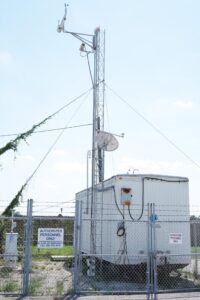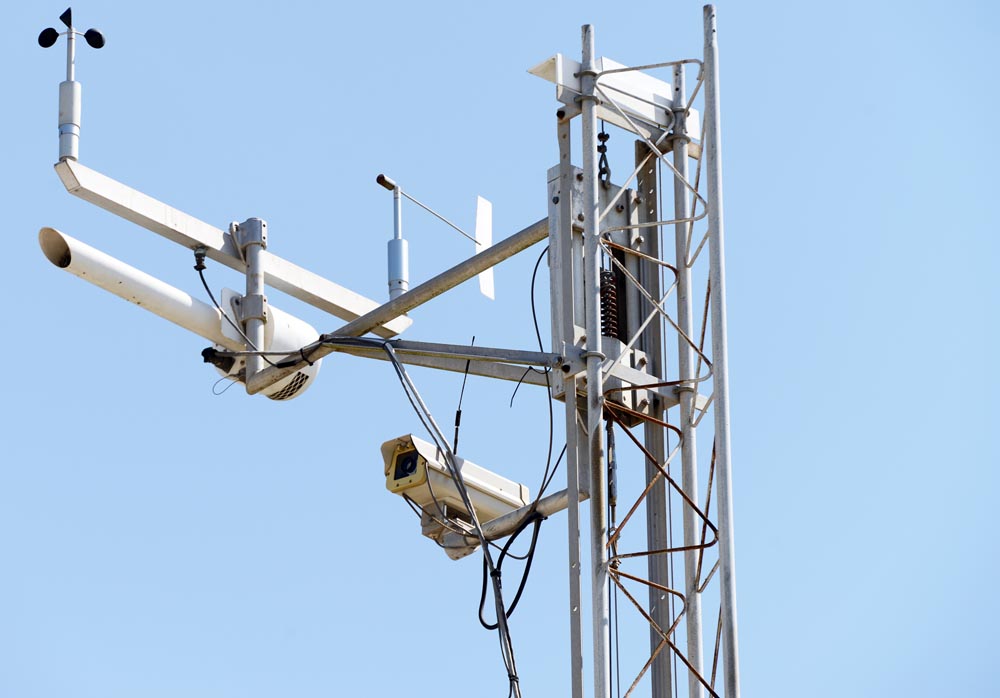A new study from the Environment Texas Research & Policy Center concludes that the Brownsville-Harlingen metropolitan statistical area had the most days of polluted air in the state last year, at least in terms of how many days the region’s two particulate monitors detected what the report’s authors characterize as elevated levels of fine airborne particulate matter.
The study, “Trouble in the Air: Millions of Americans Breathed Polluted Air in 2020,” used Environmental Protection Agency data to determine that Brownsville-Harlingen in 2020 experienced 129 days of elevated ozone and/or particulate matter. Only two of those days involved elevated ozone levels. As for particulates, the report considers a level of PM2.5 AQI (Air Quality Index) over 50 to be elevated. That translates into over 50 micrograms of particulate matter, less than 2.5 microns in diameter, per cubic feet of air over a 24-hour period.
The EPA deems AQI 0-50 to indicate “good” air quality, with little to no health risk, and AQI 51-100 “moderate,” which can cause respiratory symptoms in “unusually sensitive individuals.” The Environment Texas report, however, argues that what EPA considers “safe and acceptable levels of air pollution” are actually unhealthy in the eyes of “many American public health groups and international agencies.”
Particulate pollution comes from man-made and natural sources, though the smallest particulates (less than PM2.5) are the most dangerous to health and tend to be from man-made sources — especially the burning of fossil fuels as a primary source. The low-air-quality runner-up according to the report was El Paso, with 126 days of elevated ozone and/or particulate matter, 68 days of it attributable to elevated ozone. Ozone can cause lung damage, worsen chronic respiratory diseases such as asthma, and compromise the body’s ability to fight off respiratory infections.
In a press release, Environment Texas Executive Director Luke Metzger decried as unacceptable the reported 129 days of elevated particulate levels for Brownsville-Harlingen.
“Even one day of breathing polluted air has negative consequences for our health,” he said. “…We need to do more to deliver cleaner air for our communities.”
However, Amit U. Raysoni, an assistant professor with the University of Texas Rio Grande Valley School of Earth, Environmental and Marine Science who studies air pollution, said the Environment Texas report should not be taken to mean that the Lower Valley has the unhealthiest air in Texas. Large metropolises like Houston, San Antonio and El Paso are much worse when it comes to air quality, he said.
Raysoni said particulate matter concentration measurements tend to be localized and don’t necessarily reflect air quality of an entire city or region. Concentrations vary within an urban area, while central ambient monitoring sites such as the two Brownsville-Harlingen sites the report mentions, “may not accurately capture the exposure of the whole community,” he said.

Without a major industrial presence or the millions of vehicles of Harris County, the Lower Valley’s main contributors to airborne particulates tend to include agricultural and refuse burning, and outdoor grilling and barbecuing, Raysoni said. Other likely factors include long lines of idling trucks at the international bridges and even long-range transport of particulate matter in the form of Saharan dust, he said. Airborne particulates blowing in from Mexico may also play a minor role in the Valley’s pollution levels, Raysoni said.
Still, by and large “we’re in good shape” in terms of air quality in the Lower Valley, he said.
Meztger said agricultural fires, cross-border traffic, population growth and economic expansion all impact the region’s air quality, as likely does Mexico to some degree. Quoting Brownsville’s comprehensive plan, he said that “because PM2.5 is largely caused by the burning of fossil fuels, Brownsville’s growing population and industrial activity could pose a future threat to air quality if not property considered and planned for now.”
“LNG facilities will certainly worsen air quality,” Meztger said.
Wildfires are a major cause of particulates, and not just in the states where they originate. Metzger noted that Wednesday’s TCEQ air quality outlook forecasted that “light amounts of smoke transported from the ongoing widespread wildfire activity across the Western U.S. and in parts of Montana could raise fine particulate matter across portions of Southeast Texas, along the coastal bend of Texas, and over Deep South Texas.”





